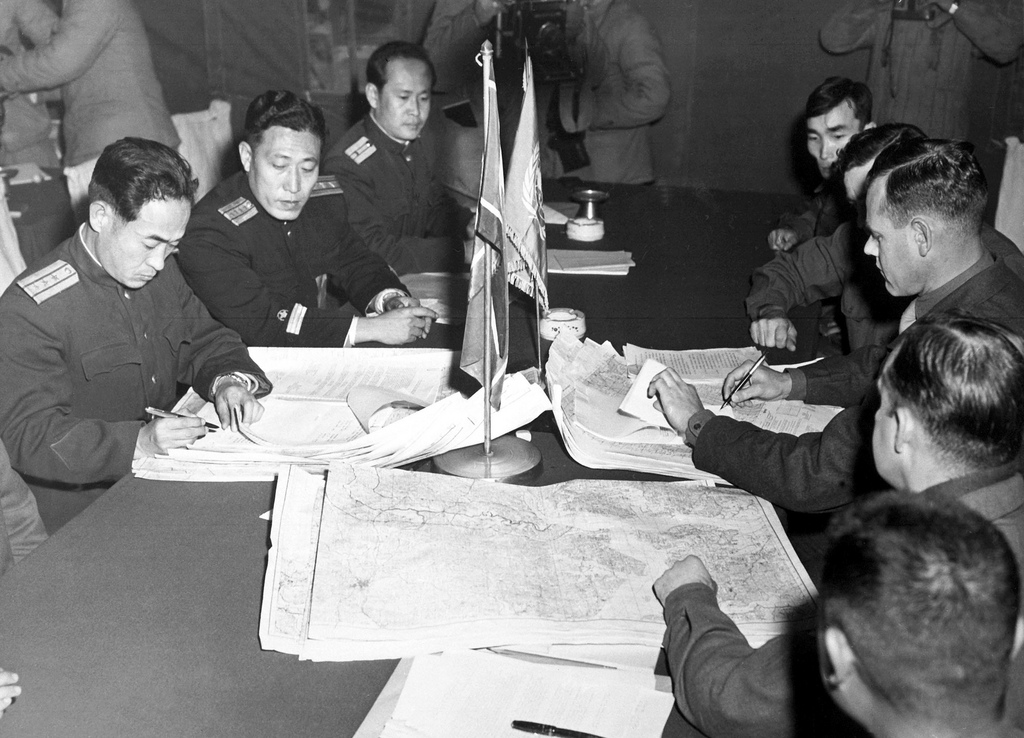The Peninsula
Looking Back at the Korean War Armistice Agreement

By Sarah K. Yun
July 27, 2012 marks the 59th anniversary of the armistice agreement that put a pause to the three-year Korean War in 1953. Although the armistice is a significant and still-relevant document in Korean and world history, little attention is paid to the document due to a lack of institutionalization, the challenging nature of enforcing the agreement, and North Korea’s continued violations.
There are several challenges to the successful usage of the armistice agreement. The first challenge is the ambiguous state of the signatories. The armistice was signed by the United Nations (UN) Command representing the 16 UN member states that committed troops to the Korean War, the Korean People’s Army (KPA) of North Korea, and the Chinese People’s Volunteers (CPV). Additionally, it was an agreement signed by militaries, not heads of states, which creates uncertainty, especially since the CPV no longer exists. Moreover, South Korea is not a signatory of the armistice. To a large extent, the United States has maintained its policy that North Korea should agree on a peace accord with South Korea before any bilateral agreement is reached with the United States. However, North Korea has continuously attempted to exclude South Korea from peace negotiations due to the fact that the South is not a signatory of the armistice.
The second challenge is the lack of institutionalization of the armistice agreement. The armistice established several structures such as the Military Demarcation Line (MDL) separating the two Koreas, the Demilitarized Zone (DMZ), the Joint Security Area (JSA) within DMZ, the Military Armistice Commission (MAC) which is tasked with investigating violations of the armistice agreement, and the Neutral Nations Supervisory Commission (NNSC) which was originally composed of Sweden, Switzerland, Poland, and Czechoslovakia. However, the role of MAC has diminished since North Korea’s 1991 refusal to acknowledge the South Korean Army general as the chief representative; and only Sweden and Switzerland remain at the DMZ for NNSC duties. With both the NNSC and the MAC essentially defunct, there needs to be more oversight to ensure that armistice is not violated and the needed mechanisms are in place to lead to peace framework in the future.
The third challenge is the actual threat posed to the armistice and peace on the peninsula by North Korea’s provocations. These violations include the 2010 torpedoing of the Cheonan and the shelling of Yeonpyeong Island, naval skirmishes in 1999 and 2002, several submarine incursions in the 1990s, the assassination of first lady Yook Yeong-soo in 1974, and the Blue House attack in 1968. Moreover, North Korea’s nuclear program creates obstacles to peace negotiations since the United States and other stakeholder countries insist on North Korea’s serious intention of denuclearization before any negotiation of a peace regime begins.
Given the ambiguous and challenging circumstances around the armistice agreement, what developments are needed to move forward? First of all, it is important for the international community to look back to the armistice agreement before looking forward to the next steps. Many people remember the beginning of the war on June 25, but minimal attention has been paid to the July 27 armistice agreement. Thereafter, a thorough Korean Peninsula peace plan needs to be designed. Moreover, a structure needs to be put into place for the coexistence of the U.S.-ROK alliance and a multilateral security system, as the armistice was signed by the UN Command which includes 16 countries. Increased political awareness and engagement on the armistice agreement from not only the Six-Party Talks nations, but also other neighboring countries and the United Nations is important for ensuring broader regional peace and stability.
The Korean War armistice agreement is both an important historical and currently relevant document for the security structure of the Korean Peninsula, Northeast Asia and beyond. As we remember the 59th anniversary of the July 27 armistice and look forward to the leadership changes in the region and the U.S., a peaceful resolution of the Korean War should not be forgotten.
Sarah K. Yun is the Director of Public Affairs and Regional Issues for the Korea Economic Institute. The views expressed here are her own.
Photo from Expert Infantry’s photo stream on flickr Creative Commons.
